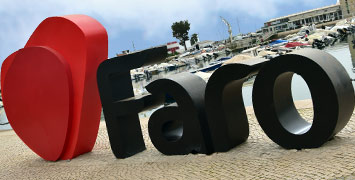Algarve-Tourist.com
The best independent guide to the Algarve
Algarve-Tourist.com
The best independent guide to the Algarve
A day trip to Faro; a 1-day tour of Faro in 2025
Faro is a fascinating city that makes for an enjoyable day trip if you are on holiday in the central Algarve region.
As the capital of the Algarve, Faro is a historically important city that provides the perfect blend of interesting sights and authentic Portuguese character.
Within Faro you will discover a charming historic quarter (the Cidade Velha), with its Gothic cathedral, cobbled streets and medieval walls, while the city centre boasts traditional shopping streets, delightful plazas and a pretty harbour. Faro has a distinctly Portuguese atmosphere, and is very different from the tourism-focused beach towns.
To the south of Faro is the Ria Formosa nature park, a fragile coastal marsh ecosystem that is an important location for migratory birds and aquatic life. Sheltering the Ria Formosa lagoons are three sand bar islands, which contain some of the quietest and most pristine beaches of the Algarve.
Faro is a fantastic location for a day trip, and this article will help you get the most from your visit.
Related articles: Faro introduction – Top 10 Faro
Highlights for a day trip to Faro
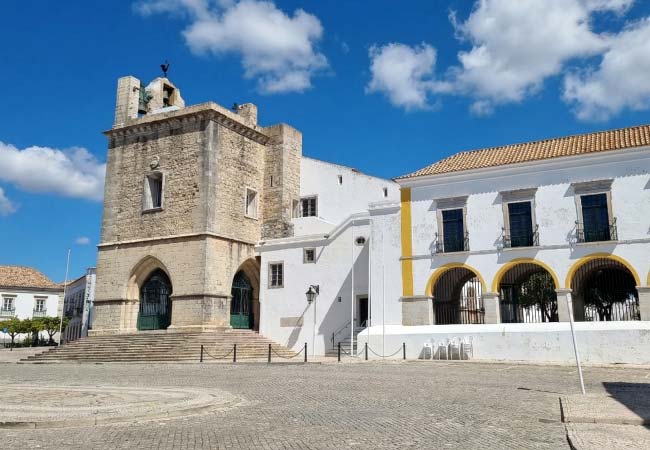
The Sé Catedral de Faro - The medieval cathedral of Faro with its lavishly decorated interior and panoramic views from the top of the gothic tower.
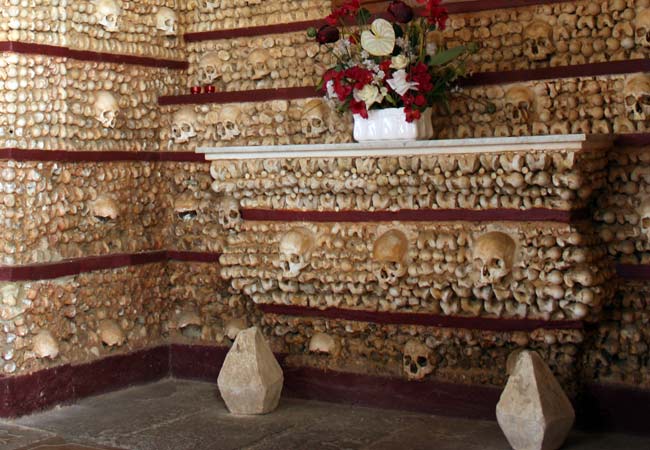
The Capela dos Ossos – A small chapel that is lined with the bones of over 1,200 monks, which lies in the courtyard of the Igreja do Carmo church.
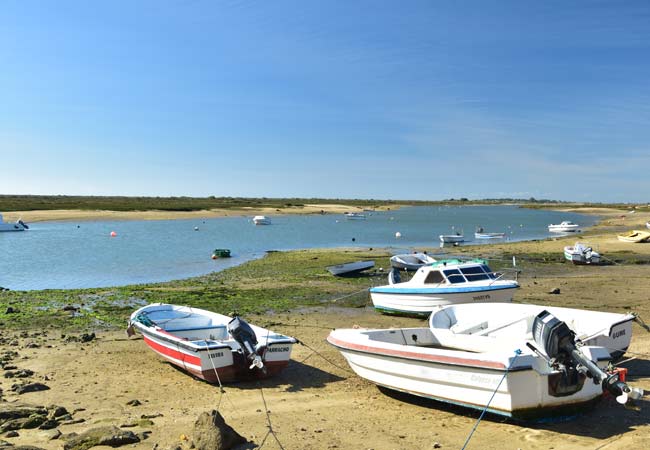
The Parque Natural da Ria Formosa – The saltwater lagoons and mudflats that support an abundance of bird and aquatic life, including one of the largest populations of long-snouted seahorses. The nature park can be discovered via the boat tours that depart from Faro harbour, or you could rent a kayak and paddle the quiet waterways.
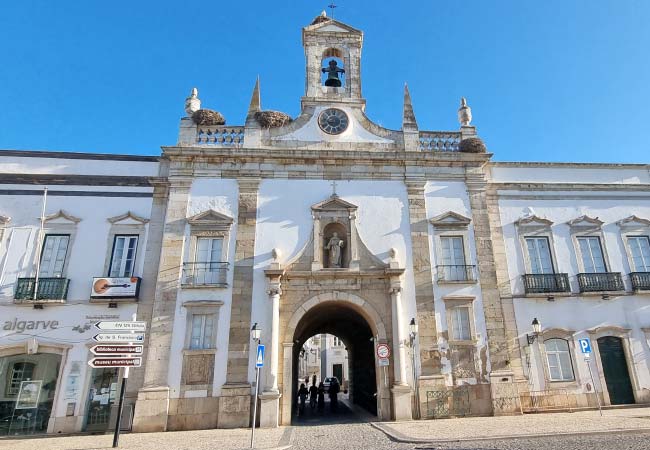
The Arco da Vila - The neo-classical gateway into the Cidade Velha.
An overview for a day trip to Faro
The historic centre of Faro is relatively compact and can be easily seen within three hours of sightseeing. Of these three hours, you could spend two hours exploring the Cidade Velha, with the rest of the time spent discovering the city centre, including the Igreja do Carmo and Capela dos Ossos.
To extend your day trip, you could add a 1-hour boat tour of the Parque Natural da Ria Formosa or a boat ride to the Ilha Deserta (the Deserted Island).
There are excellent public transport links to Faro from the surrounding region, and the city can be easily visited without the need for a car. If you do have a car and want to spend longer in the area, you could include a visit to the village of Estoi or the fishing port of Olhão.
Below is a suggested tour for a day trip to Faro. The tour begins and ends at the train station, which is also close to the bus station, and the total distance covered is 5.3km. The map also includes the sights and beaches of the Faro region - zoom out to see these points.
Sights of day trip: 1) fishing harbour 2) Jardim Manuel Bivar 3) Igreja da Misericórdia 4) Arco da Vila gateway 5) Porta Nova 6) Se Cathedral 7) City hall 8) Faro Museum 9) Arco do Repouso 10) Rua de Santo António (shopping street) 11) Igreja de São Pedro 12) Igreja do Carmo 13) Capela dos Ossos.
Sights around Faro: 14) Cabo de Santa Maria 15) Ilha Deserta 16) Culatra (fishing village) 17) Forum Algarve (shopping centre) 18) Start of the N2 road
Beaches: 19) Praia de Faro 20) Praia Da Ilha Deserta 21) Praia do Farol 22) Praia da Ilha da Culatra
Insight: The N2 road extends along the length of Portugal and is a popular driving or biking route.
Faro, Loulé or Olhão?
Faro, Loulé and Olhão are all popular day trips within the central Algarve region. Of the three, Faro is the best destination for your day trip, as it offers more varied sights and attractions.
Loulé is a pleasant market town with an Arabic-inspired covered market and a pretty historic centre. It has much less to see than Faro and can be fully explored in just a couple of hours. The Saturday market of Loulé is very overrated and only has stalls selling household items and cheap clothes.
Olhão is a fishing and port town, with a pleasant waterfront and traditional district where fishing families historically lived. Faro has more sights than Olhão, so is best visited first. However, Olhão is only 7km east of Faro, so they can both be combined into a single day of sightseeing.
Insight: The most traditional and characterful town of the Algarve is Tavira, which lies in the eastern Algarve. If you have a car - or are happy with a longer train/bus journey - Tavira is highly recommended for a day trip and is better than Faro.
Related articles: Olhão guide - Loulé guide - Tavira guide
The Parque Natural da Ria Formosa for a day trip
An alternative day trip to Faro puts the emphasis on the Parque Natural da Ria Formosa, with time for sightseeing in Faro city on either side of the boat tour.
The Ria Formosa nature park protects the mudflats and saltwater channels between Faro and the Atlantic Ocean. This area is home to varied marine life (seahorses, crabs, oysters) and wading birds (Egrets, Spoonbills), as well as being an important resting point for migrating birds. The nature park also preserves traditional fishing techniques, such as the clay pot fishing of Santa Luzia, and protects the island communities (like Culatra) from tourist developments.
Along the southern side of the Ria Formosa are three sandbar islands (Ilha Deserta, Ilha da Culatra and Praia de Faro) that shelter the waterways from the ocean and boast some of the quietest beaches in the Algarve. On the Ilha Deserta is the Cabo de Santa Maria, the most southerly point of mainland Portugal.
Insight: The Ria Formosa is an important ecosystem, but much of its wildlife is timid, hard to spot from a boat, or simply small in size (such as the millions of long-snouted seahorses). Certain visitors may feel it lacks attention-grabbing wildlife or sights.
There are many options for boat tours of the Ria Formosa that depart from Faro. There are short, 1-hour tours of the lagoons close to Faro, 3-hour tours to the sandbar islands, or 4-hour routes that also include the traditional fishing village of Culatra. An alternative is to join a guided kayak tour. Most of these tours leave at 10am, and there is often an afternoon departure for the shorter tours.
We have worked with GetYourGuide for the last seven years, with some of their best tours of Ria Formosa including:
• 1-hour boat tour of the Ria Formosa
• 3-hour tour that stops at Deserta and Farol islands
• 4-hour tour of the Ria Formosa and the islands, including Culatra fishing village
• Kayak hire of 2.5 or 4 hours
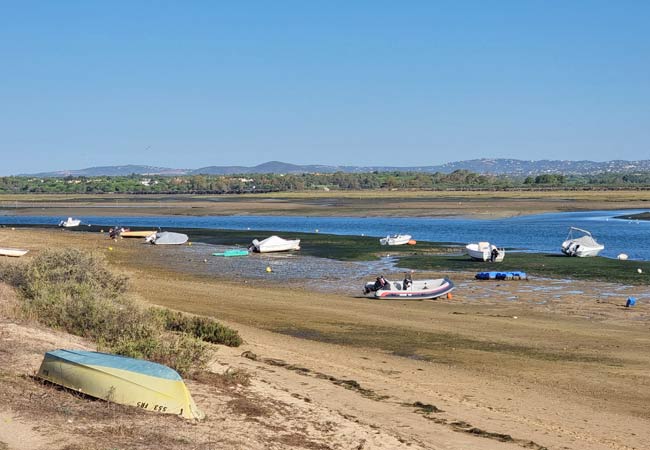
The calm waterways of the Parque Natural da Ria Formosa
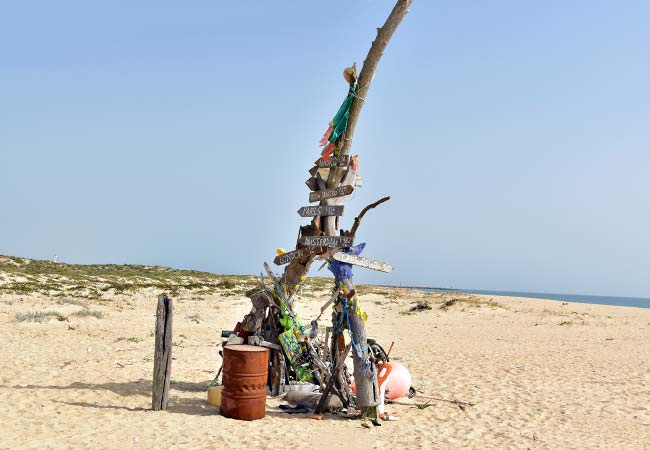
The Cabo de Santa Maria on the Ilha Deserta is the most southerly point of mainland Portugal
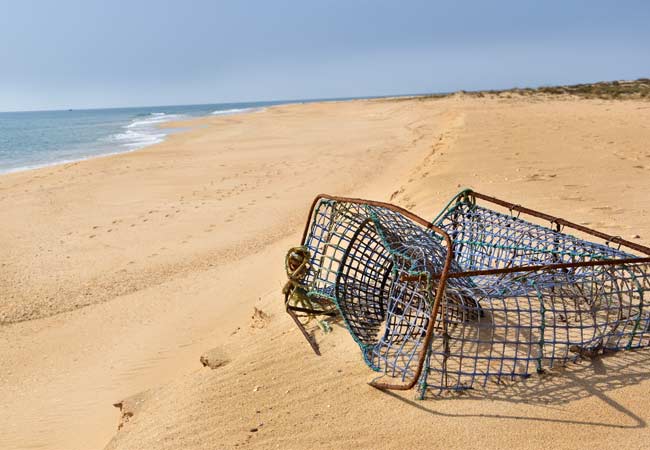
The Ilha Deserta, as the name suggests, is completely deserted
Travel to Faro
Faro is easily accessible by both public transport and car. For those driving, there is a convenient large car park located to the east of the Cidade Velha.
For public transport, if you are heading to Faro from the west (Albufeira, Vilamoura and Quarteira) then it is advisable to catch the regional bus, operated by Vamus. The main route is the No.9 and the latest timetable can be seen on the Vamus website:
https://vamusalgarve.pt
If you are travelling from the east (Olhão, Tavira or Monte Gordo) it is suggested that you catch the regional train. The latest timetable can be seen on the Comboios de Portugal (CP) website:
https://www.cp.pt/
Insight: The Algarve railway does cover the central and western Algarve, but the train stations are not close any of the town centres (such as Albufeira train station which is 5km from the town centre).
A convenient alternative to public transport is using ride-hailing services such as Uber or Bolt. A typical journey from Albufeira to Faro costs approximately €23 for up to four passengers, whilst the fare from Vilamoura is around €14. Do be aware that prices increase during peak times, and availability can be limited during the busy summer months when demand often exceeds the number of available drivers.
Faro bus and train stations are just a short walk from the city centre and are close together. When exiting the train or bus station, turn right and walk down the Avenida da República (50m for the bus station, 250m for the train station) to reach the marina and main plaza.
If you are driving, it is advisable to park in the Largo de São Francisco car park. This large car park has over 650 spaces and is situated on the western side of the Cidade Velha (GPS: 37.0122, -7.932).
This is a free car park, but it is advisable to have a couple of Euros to give to the (harmless) homeless people who will wave you into the parking bay, ensuring no damage happens to your car.
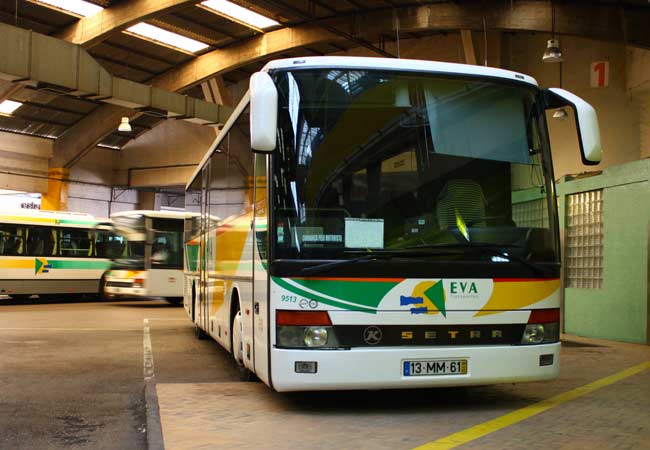
Faro bus station
A suggested day tour of Faro
Most visitors begin their tour of Faro at the Jardim Manuel Bívar, which is conveniently situated near the bus and train stations.
This elegant plaza serves as a hub of local life, where elderly residents gather for card games and white storks construct their enormous nests atop surrounding buildings.
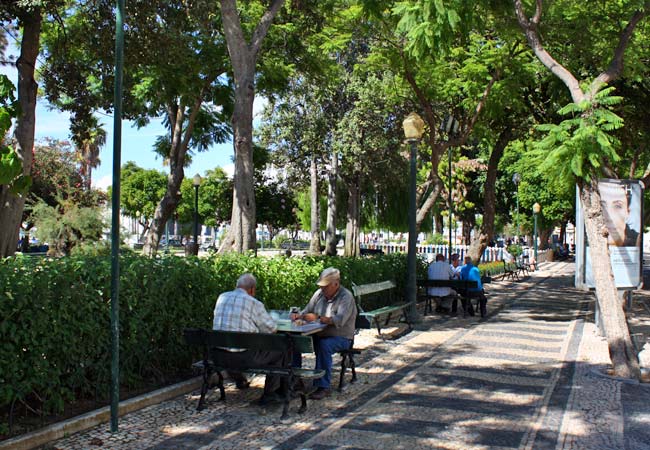
The peaceful Jardim Manuel Bívar
The Jardim Manuel Bívar overlooks the marina and fishing harbor, where only small vessels can dock due to the railway bridge at the entrance.
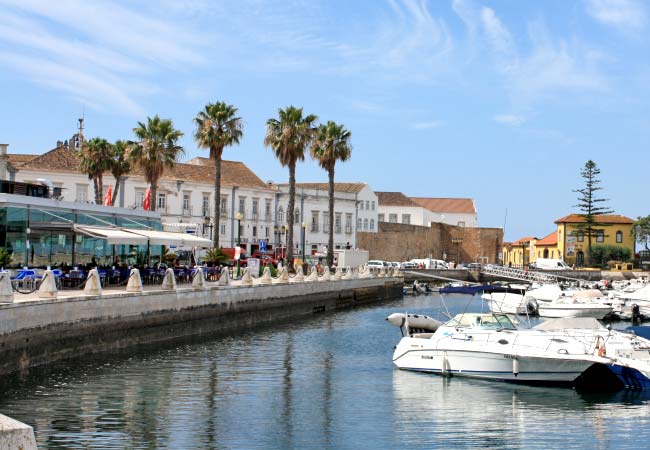
The decorative Arco da Vila gate leads into the Cidade Velha (Old Town). This neo-classical archway sits in front of the original Moorish gateway, and dates from 1812. At the top of the gateway is a statue of São Tomás de Aquino (St. Thomas Aquinas), the patron saint of Faro.
Next to the gate is the main tourist information centre of Faro, and from here it is possible to pick up a free tourist map of the city.
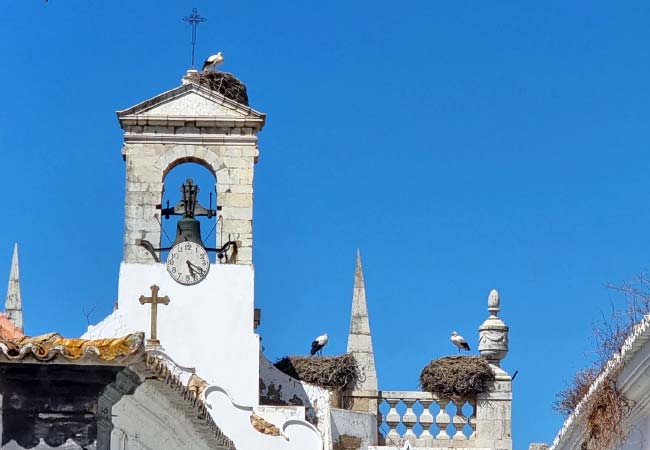
Storks nesting on the top of the Arco da Vila
When pass through the Arco da Vila, look carefully at the Moorish horseshoe arch behind the neo-classical façade – it's one of the few remaining examples of Islamic architecture in the city.
A small cobbled street leads up from the Arco da Vila to the Largo da Sé, the main plaza of the old town on which the city hall and Se cathedral are located.
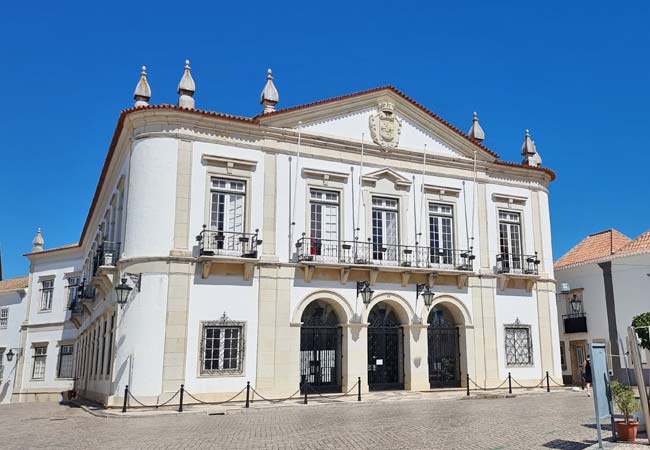
Faro city hall
The Se cathedral, while appearing predominantly Gothic, tells the story of Faro's turbulent history through its architecture. The original 13th-century church was almost completely destroyed by British privateers in 1596, with the current structure incorporating various rebuilding phases.

The Gothic tower of the cathedral
Inside, the cathedral's hand-painted tiles (azulejos) depict scenes from the lives of saints, while the organ, is adorned with Chinese motifs – a rare example of Oriental influence in Portuguese religious art.
Visitors to the Se cathedral are able to climb the clock tower, and from this vantage point there are fantastic views over Faro and the Ria Formosa national park.
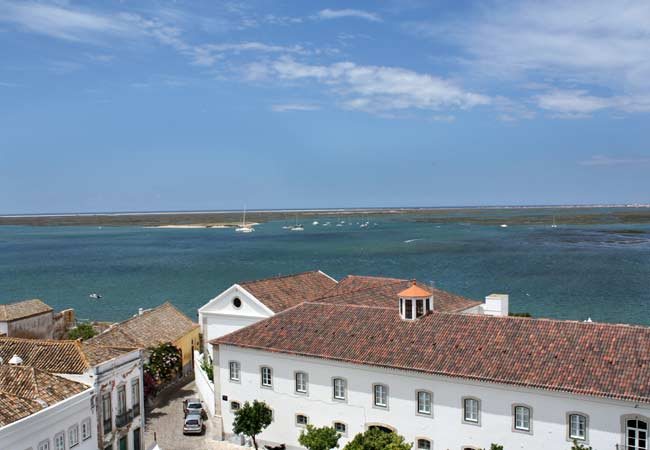
The view from the top of the Se cathedral over the lagoons of the Parque Natural da Ria Formosa
From the Largo da Sé, follow the cobbled streets towards the waterfront through the medieval Porta do Sol (Sun Gate). The waterfront area serves as the departure point for boat tours exploring the Ria Formosa national park. This complex lagoon system is home to a remarkable variety of wildlife, including flamingos, seahorses, and migrating birds.
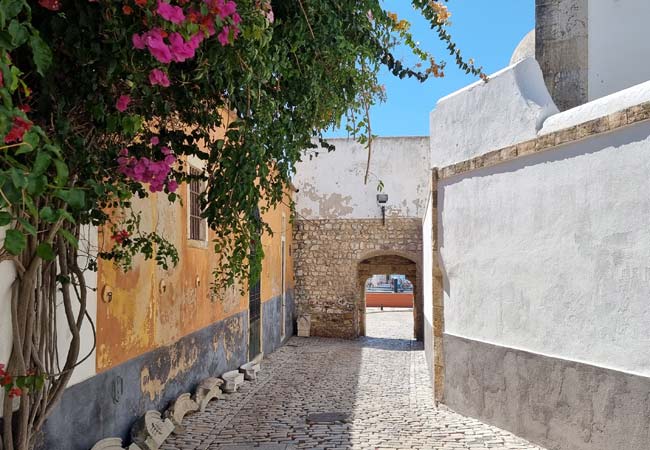
The Porta do Sol Gate
Following the ancient city walls southward leads to the Rua do Castelo, where the atmospheric ruins of Faro's medieval citadel still stand.
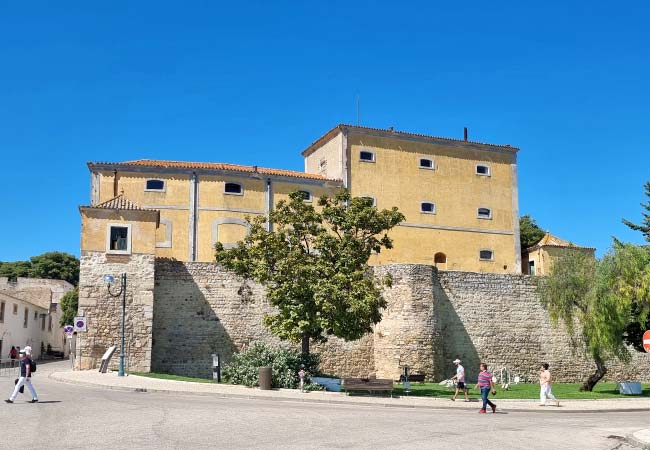
At the top of the street turn right to see the Museu Municipal de Faro, which is housed in the 16th-century Convento de Nossa Senhora da Assunção. This impressive building features a beautiful two-story Renaissance cloister and exhibits Roman and Moorish artifacts found in the Algarve region.
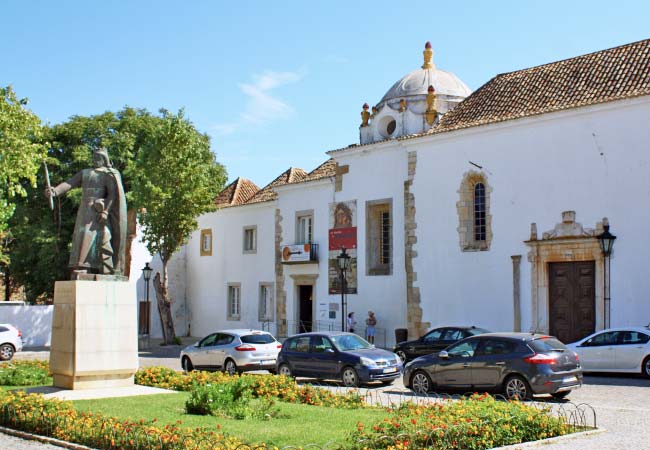
From the museum head eastward through the Arco do Repouso (Arch of Rest) named after the tale of King Afonso III resting here during the Christian conquest of Faro from the Moors.
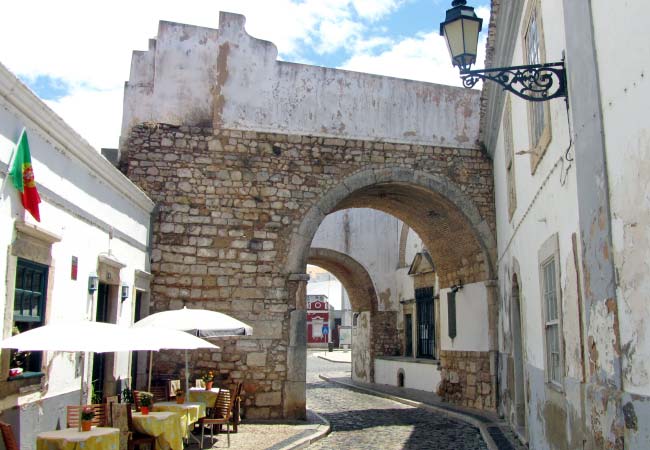
The tour now heads towards the shopping and more modern area of Faro. On the route you will pass the elegant Palácio Belmarço. This decorative building stands as one of Faro's finest examples of Art Nouveau architecture, with its ornate facade featuring traditional Portuguese tiles and decorative iron balconies.
The Rua de Santo Antonio is the main shopping street of Faro and is pedestrianised and lined with cafes, shops and restaurants. Local confeitarias (pastry shops) serve regional specialties like Dom Rodrigos – sweets made from eggs and almonds.
The street's numerous cafes and traditional Portuguese restaurants offer an ideal lunch stop, where you can sample local specialities such as grilled sardines or cataplana (a seafood stew cooked in a distinctive copper pan of the same name).
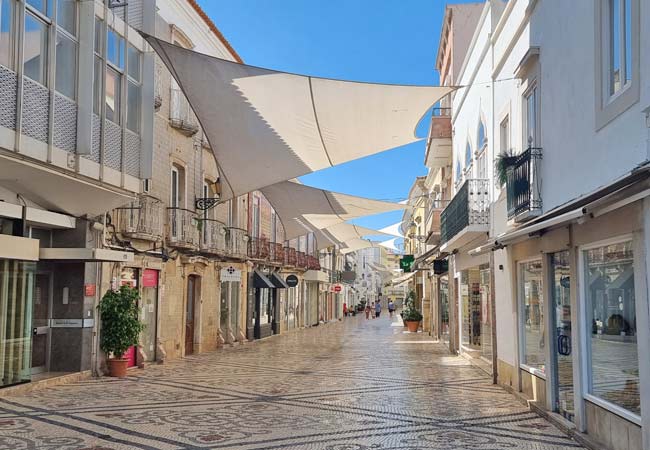
The final sights of the day are to visit the Igreja do Carmo and Capela dos Ossos (Bone Chapel). The Igreja do Carmo is an imposing 18th-century baroque church distinguished by its twin bell towers and elaborate gilded altarpiece.
Behind the church lies the macabre Capela dos Ossos, a small chapel whose walls are lined with the bones and skulls of over 1,200 monks. On entering, the inscription above the entrance reads "Stop here and think of the fate that will befall you."
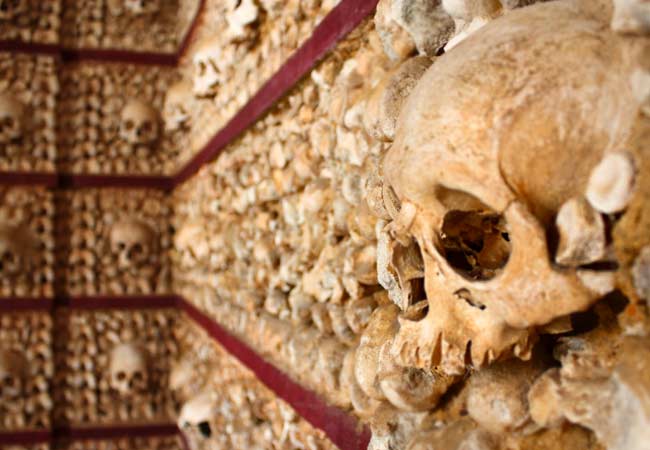
A skull in the wall of the Capela dos Ossos
Our most popular guides for Faro and the Algarve
All of our guides to the Algarve






















